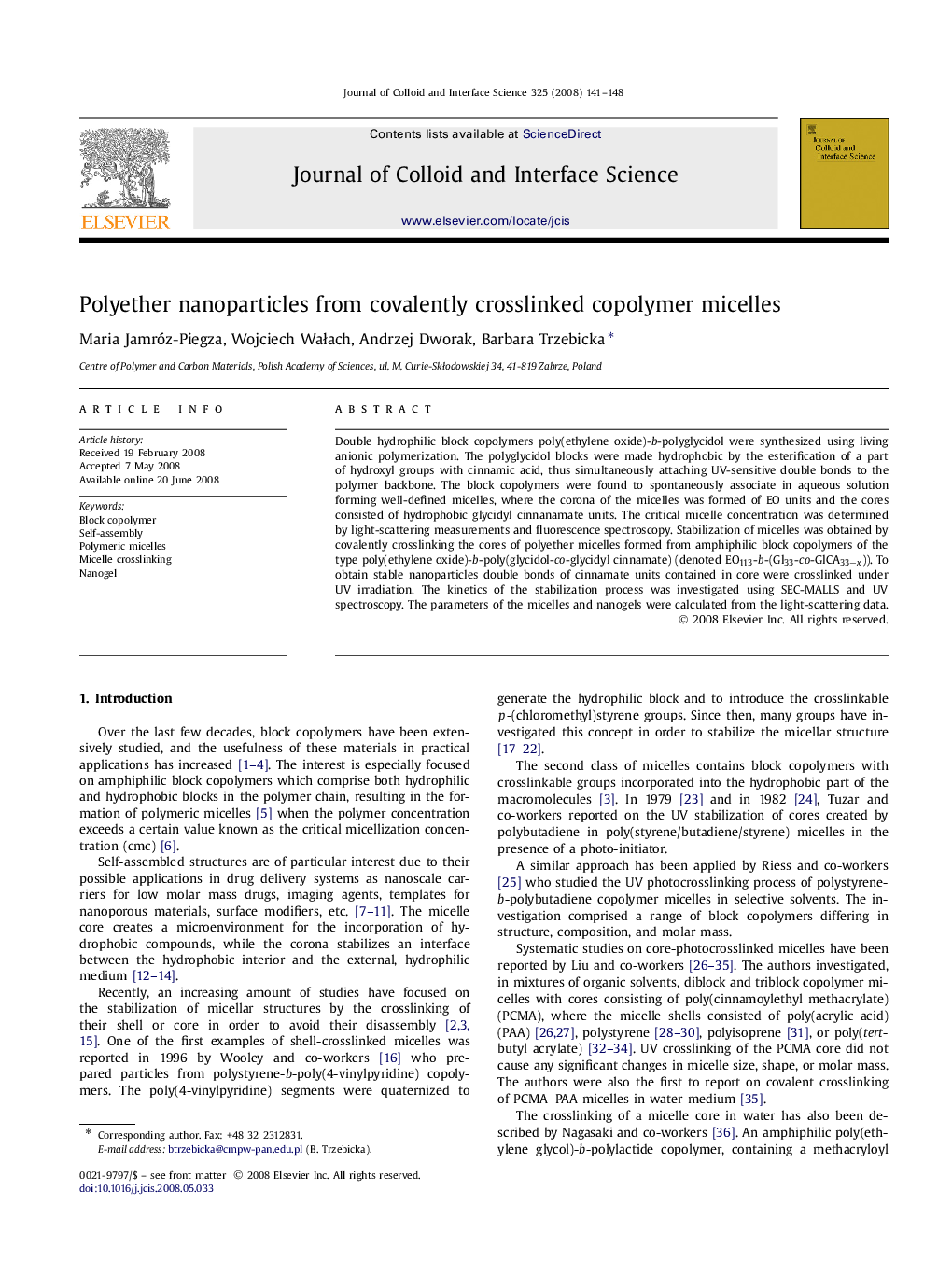| Article ID | Journal | Published Year | Pages | File Type |
|---|---|---|---|---|
| 611052 | Journal of Colloid and Interface Science | 2008 | 8 Pages |
Double hydrophilic block copolymers poly(ethylene oxide)-b-polyglycidol were synthesized using living anionic polymerization. The polyglycidol blocks were made hydrophobic by the esterification of a part of hydroxyl groups with cinnamic acid, thus simultaneously attaching UV-sensitive double bonds to the polymer backbone. The block copolymers were found to spontaneously associate in aqueous solution forming well-defined micelles, where the corona of the micelles was formed of EO units and the cores consisted of hydrophobic glycidyl cinnanamate units. The critical micelle concentration was determined by light-scattering measurements and fluorescence spectroscopy. Stabilization of micelles was obtained by covalently crosslinking the cores of polyether micelles formed from amphiphilic block copolymers of the type poly(ethylene oxide)-b-poly(glycidol-co-glycidyl cinnamate) (denoted EO113-b-(Gl33-co-GlCA33−x)). To obtain stable nanoparticles double bonds of cinnamate units contained in core were crosslinked under UV irradiation. The kinetics of the stabilization process was investigated using SEC-MALLS and UV spectroscopy. The parameters of the micelles and nanogels were calculated from the light-scattering data.
Graphical abstractStable nanoparticles were obtained by UV-induced dimerization of double bonds in poly(ethylene oxide)-b-poly(glycidol-co-glycidyl cinnamate) micelles. These polymeric nanoparticles may find application as novel carriers and agents for controlled release.Figure optionsDownload full-size imageDownload as PowerPoint slide
